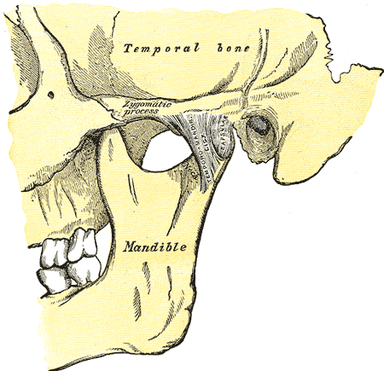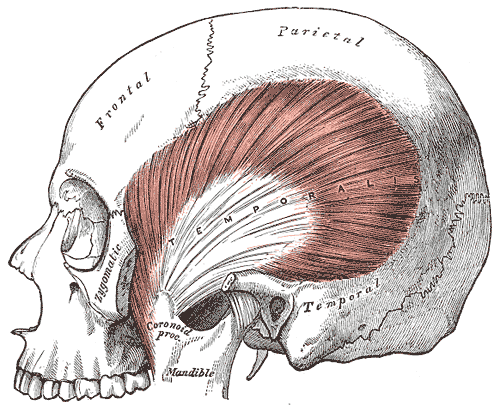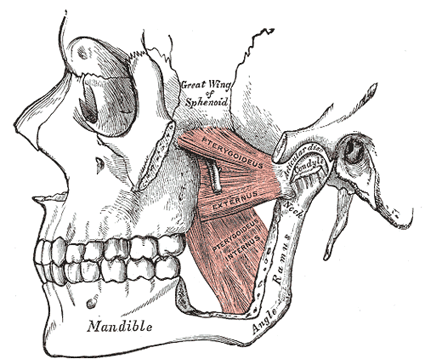TMJ / TMJD / TMD
The initials T.M.J., stand for Temporo Mandibular Joint. Sometimes you will see that it is written TMJD or TMD. The “D” simply stands for ‘Disorder‘. Please understand that when I am talking about the joint itself, I will refer to it as the TMJ. When I speak of TMJD, I am speaking of the specific “disorder” that occurs within the temporomandibular joint or TMJ.

TMJD Has Many Different Symptoms
- Difficulty biting or chewing.
- Clicking, popping, or snapping sounds when opening or closing the mouth.
- A dull, aching, pain in the face.
- Jaw pain.
- Pain in the joint itself.
- Headache or migraine (particularly in the morning).
- Neck or shoulder pain.
- Hearing loss, ringing in the ear, or loss of equilibrium.
- Reduced ability to open or close the mouth.
If you put your fingers in your ears and press forwards toward your eyes, you will feel the TMJ. Now open and close your mouth. You can feel the mandible (jaw bone) making an articulation (joint) with the area of the skull near the temple (Temporal Bone). Thus, the Temporo Mandibular Joint.
The ‘Hinged” Temporomandibular Joint  | Temporalis Muscle  |
I am not going to get into every conceivable thing that can cause TMJD. However, some of the most common include:
- Clenching or grinding the teeth (especially at night).
- Trauma (CAR ACCIDENTS, fights, abuse, etc).
- Misalignment of the teeth (this can often be the result of dental work).
- Diminished underbite (think Gomer Pyle here), or overbite.
- Excessive gum chewing or nail biting
- VERTEBRAL SUBLUXATION (neck vertebrates that are either misaligned or not moving freely, one on the other).
- MYOFASCIAL SYNDROME and / or DEGENERATIVE ARTHRITIS.
It is these last two that I wish to focus on. There are four muscles that are chiefly responsible for chewing. These four are referred to as, “The Muscles of Mastication” and include the Masseter and Temporalis Muscles, as well as the Internal and External Pterygoid Muscles (The Internal Pterygoid cannot be accessed externally, although it can, to some degree, be accessed through the mouth).
The first two that I want to look at are the Temporalis and Masseter. I want you to note how much tendon there is on these muscles. I also want you to see how much fascia there is on the skull in general. The picture below shows the jaw being partially cut away to expose the Internal Pterygoid Muscle.

After two decades of practice, it is my experience that even for those who “specialize” in treating TMJD, it is somewhat of a crapshoot. Some of the more common treatments for TMJD include things like orthodontics (braces), manual adjustment of the bite (using a dental drill to grind certain teeth down), medications and surgical procedures of all shapes, sizes, and flavors, hypnotherapy, night splints, etc, etc, etc.
Because, as you can see by looking at the pictures, there is so much fascia and muscle tendon associated with the Muscles of Mastication, we sometimes see TMJD that is directly related to FASCIAL ADHESIONS or TENDINOSIS. Before trying expensive, invasive, (and often irreversible) treatments, come see us and see what we can do. Our success rate is not what it is with many other things, but you will know in just a couple of treatments whether or not it will help. The alternative is a time-consuming and costly roll of the dice. Before you contemplate something rash or expensive, at least talk to me.
